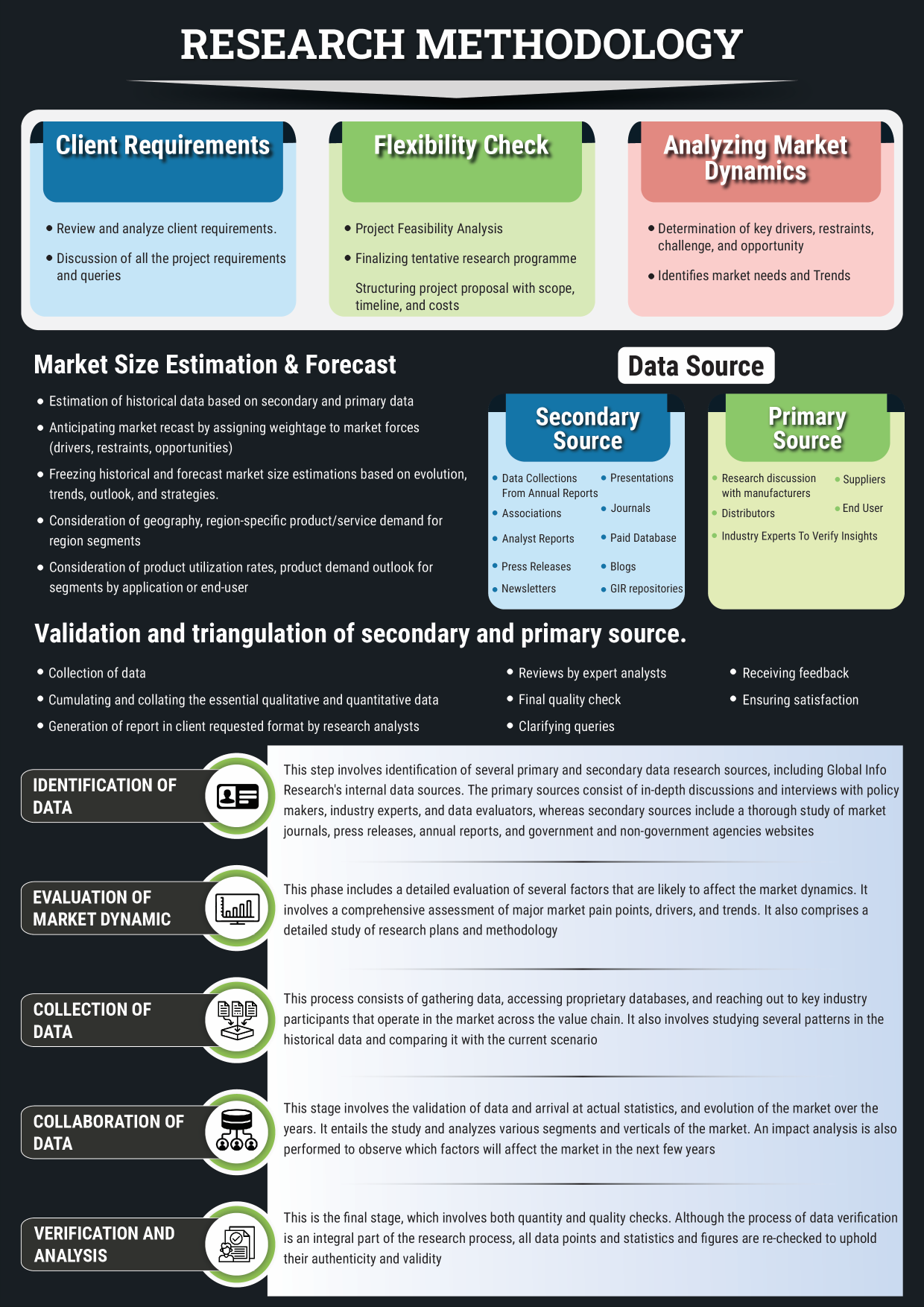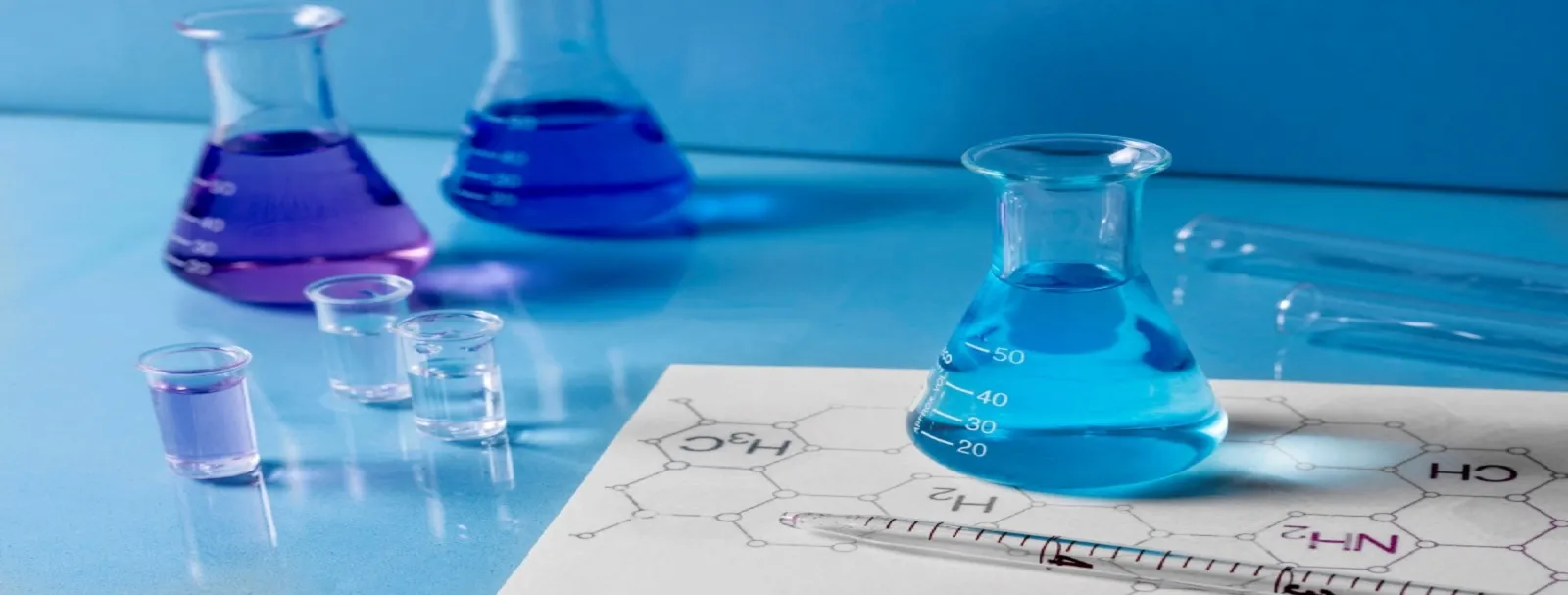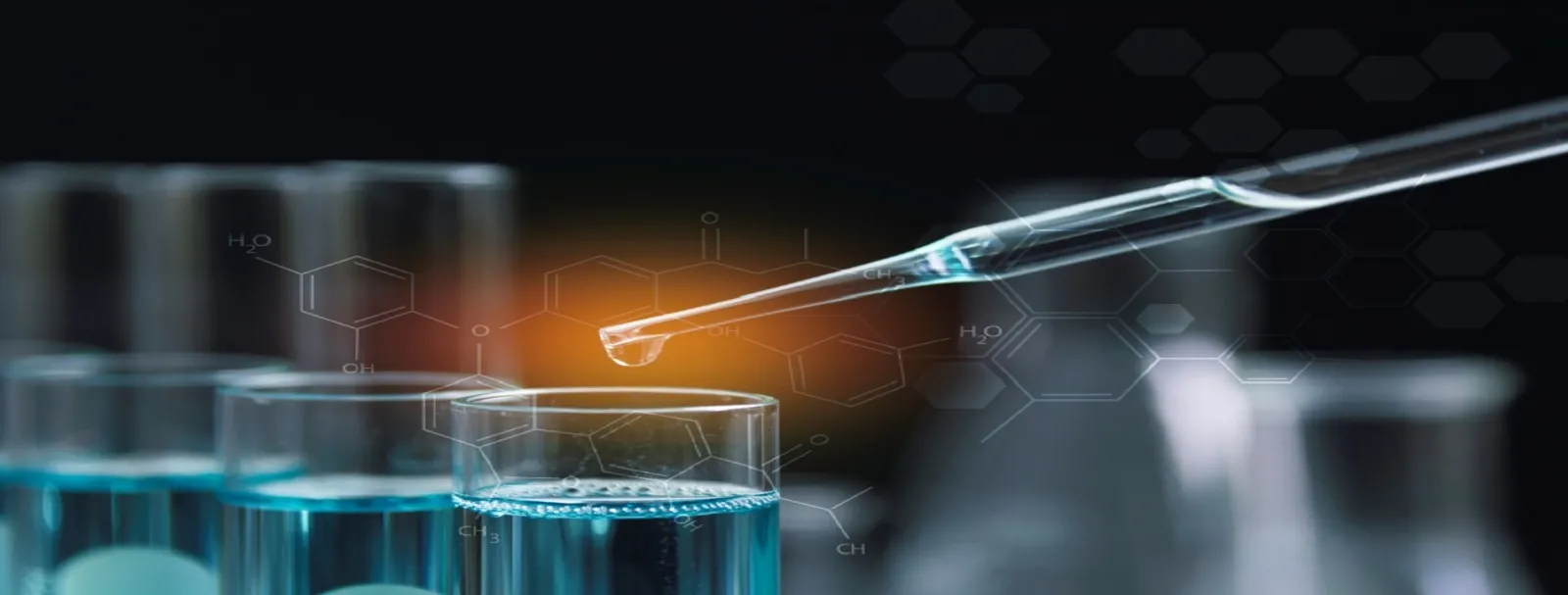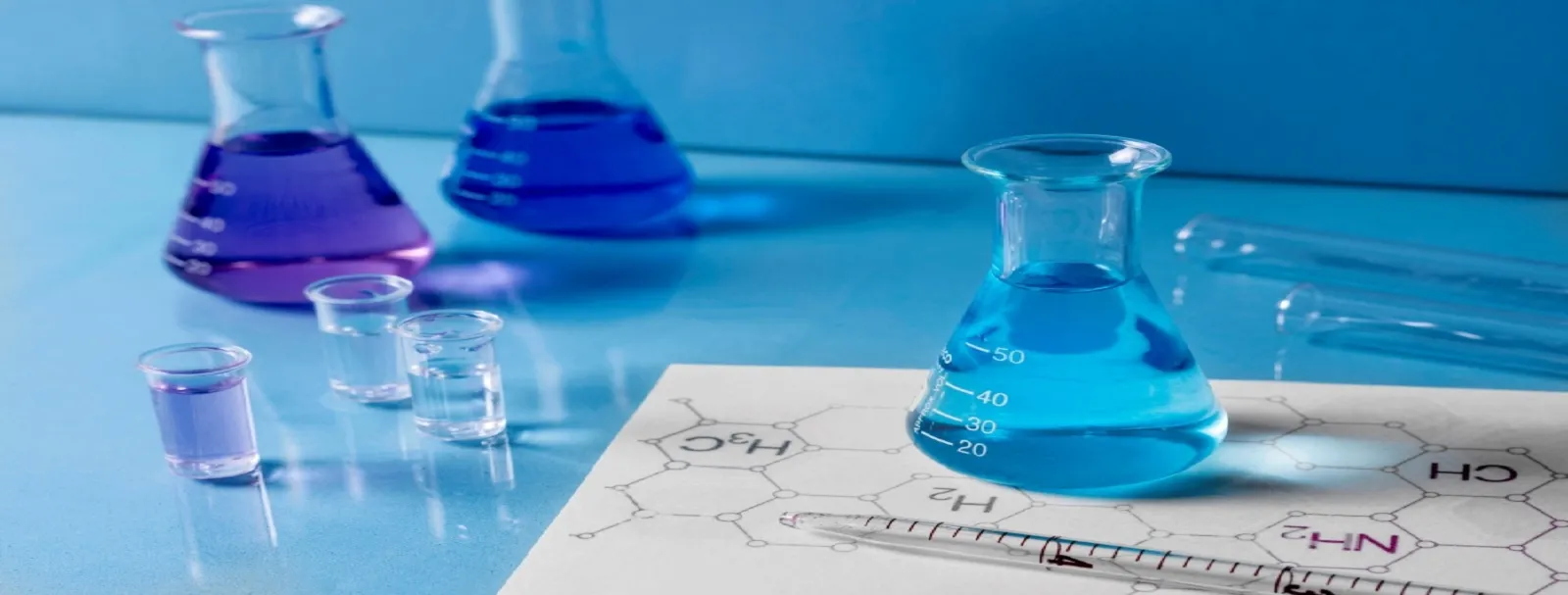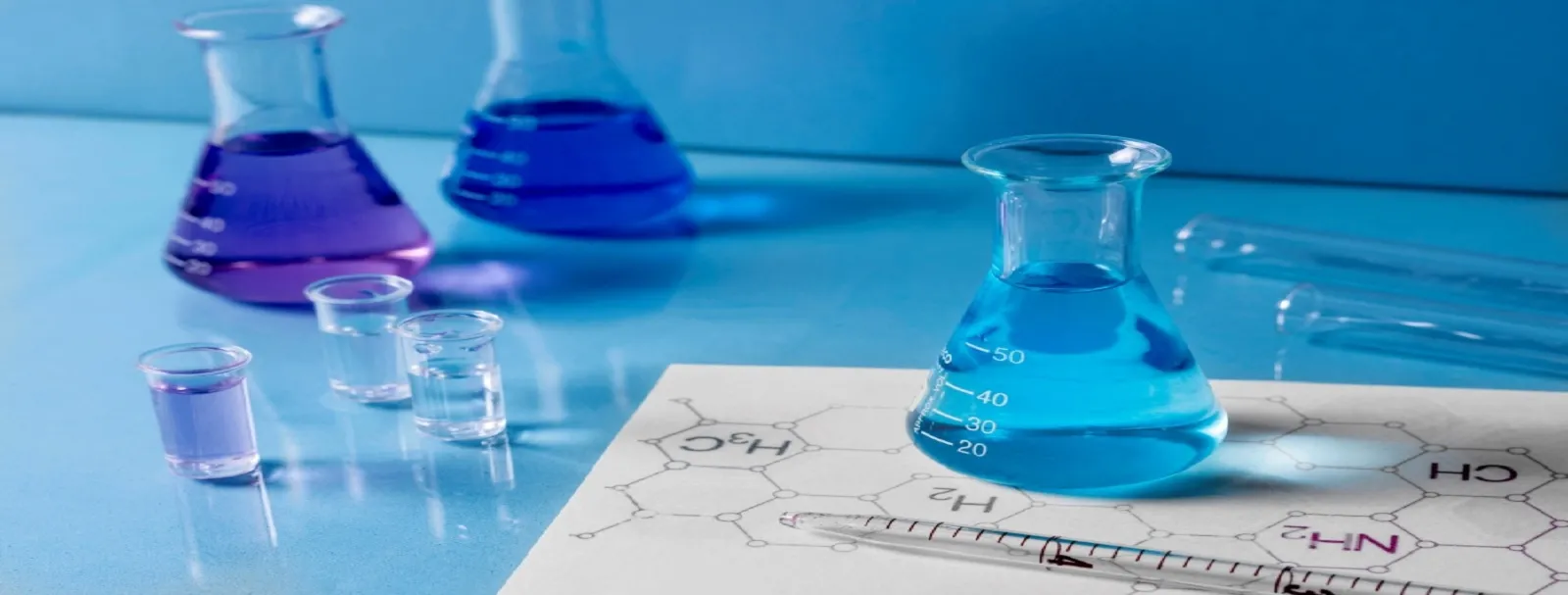Market Outlook
The global Polyethylene Imine Market size was valued at USD 453.8 million in 2022 and is forecast to a readjusted size of USD 504.7 million by 2029 with a CAGR of 1.5% during review period.
Introduction: Why the Polyethylene Imine (PEI) Market Matters in 2025
The Polyethylene Imine (PEI) Market 2025 is gaining global traction as industries increasingly demand high-performance, multifunctional polymers for applications spanning water treatment, paper manufacturing, adhesives, personal care, and biotechnology. Polyethylene imine, a cationic polymer with a highly branched or linear structure, stands out for its unique amine-rich molecular composition - making it an exceptional agent for binding, dispersing, and surface modification.
PEI’s highly reactive and water-soluble properties position it as a go-to solution in various industrial processes requiring ionic interaction or molecular adhesion. From enhancing ink retention in paper coatings to enabling advanced drug delivery systems, its versatility is driving robust demand across established and emerging markets.
For stakeholders seeking sustainable innovation, high-margin specialty chemicals, or advanced performance additives, the PEI market in 2025 presents a compelling frontier of opportunity.
Market Drivers: What’s Fueling the Polyethylene Imine Market Boom?
Booming Demand for Water Treatment Polymers
Rising global concerns over water scarcity and contamination have significantly boosted the use of PEI as a flocculant and chelating agent in wastewater treatment. Its ability to bind heavy metals and adjust water chemistry makes it ideal for both industrial effluent management and municipal purification systems.Growth in Paper and Packaging Industry
PEI improves adhesion and ink binding in specialty paper coatings, particularly in high-speed printing applications. With rising demand for sustainable, high-performance paper-based packaging, especially in e-commerce, PEI use is rapidly scaling.Emergence of PEI in Biomedical Applications
Polyethylene imine plays a vital role in gene delivery systems and drug formulation, thanks to its excellent transfection efficiency. As biopharmaceuticals expand, PEI is gaining ground as a key ingredient in non-viral vectors for genetic medicine.Advancements in Adhesives and Surface Treatments
In the adhesives and coatings sector, PEI enhances adhesion, dispersion, and cross-linking - making it a vital additive in the development of performance coatings, pressure-sensitive adhesives, and corrosion-resistant primers.Surging Demand in Personal Care Formulations
With increasing interest in cationic polymers for conditioning effects in hair and skin care products, PEI and its derivatives are finding niche applications in formulations that demand electrostatic bonding and long-lasting film formation.
Innovation in Focus: How Manufacturers Are Enhancing PEI Solutions
Development of Biocompatible PEI Grades
R&D efforts are focusing on synthesizing lower molecular weight and biodegradable PEI grades to address toxicity concerns in pharmaceutical and cosmetic applications. This opens new doors in transdermal delivery and dermatological products.Custom Polymer Architectures for Targeted Use
Manufacturers are creating tailor-made PEI variants - linear, branched, or dendritic structures - each optimized for specific applications, such as DNA delivery, emulsion stabilization, or textile softening.Sustainable Feedstock Integration
Some chemical producers are exploring bio-based raw materials to produce eco-friendly PEI polymers, aligning with global sustainability goals and increasing regulatory compliance in green chemistry.High-Purity Formulations for Electronics and Semiconductors
PEI’s antistatic and dielectric-modifying capabilities are being tapped in electronics for surface modification and conductive film manufacturing. High-purity PEI products are being designed for cleanroom-sensitive environments.Smart Packaging and Active Coatings
Innovators are incorporating PEI into smart packaging solutions that can actively respond to environmental stimuli - such as moisture, pH, or microbial growth - transforming passive packaging into functional systems.
Regional Breakdown: Where the PEI Market is Growing Fastest
North America
Driven by the strong pharmaceutical, paper, and water treatment sectors in the U.S. and Canada, North America remains a major hub for PEI consumption and R&D. Regulatory support for advanced water purification technologies adds momentum to market growth.Europe
Europe’s stringent environmental and safety regulations are encouraging the adoption of high-efficiency, low-toxicity chemical additives like PEI. Additionally, the region's focus on biomedical innovation and bioplastics is boosting high-purity and specialty-grade demand.Asia-Pacific (APAC)
APAC is the fastest-growing PEI market, led by rapid industrialization, rising water pollution concerns, and booming cosmetics and adhesives sectors in China, India, and Southeast Asia. Local manufacturing capacity and cost-efficient production are further driving regional dominance.Latin America
Countries like Brazil and Mexico are witnessing increased PEI usage in wastewater treatment, pulp and paper production, and crop protection - driven by both environmental regulations and the rise of value-added exports.Middle East & Africa (MEA)
MEA is a developing market where PEI is gaining adoption in desalination, oilfield chemicals, and mining effluent treatments. Growth is fueled by infrastructure expansion and increasing demand for water reuse and recycling technologies.
Strategic Considerations: How to Succeed in the PEI Market 2025
Regulatory Alignment is Key
With growing regulatory scrutiny on chemical safety, manufacturers must ensure compliance with REACH, EPA, and FDA guidelines. Offering GRAS or pharma-grade certifications can enhance customer trust in high-purity applications.Tailor Product Lines to End-User Needs
Develop targeted PEI formulations for industries such as life sciences, paper, textiles, or construction - each requiring specific molecular weights, viscosity, and functional groups.Invest in Application Engineering
Partnering with downstream formulators and OEMs can help adapt PEI solutions to evolving performance and sustainability requirements, increasing long-term client retention.Build Regional Production or Distribution Hubs
Establishing regional plants or partnerships can reduce logistics costs, minimize carbon footprint, and cater to the specific needs of local markets, especially in high-growth APAC and LATAM regions.Educate the Market on Safety and Efficacy
Many end users are still learning about PEI's full potential. Offering transparent technical data, application guides, and formulation support can accelerate market adoption and brand positioning.
Conclusion: The Polyethylene Imine Market 2025 - A Polymer with Purpose
The Polyethylene Imine Market in 2025 stands at the crossroads of innovation, industrial efficiency, and sustainable chemistry. With its versatile functionality across critical sectors - ranging from water purification to genetic medicine - PEI is more than a specialty polymer; it’s a cornerstone of future-ready formulations.
Its unmatched cationic charge density and molecular adaptability offer unique advantages in both conventional and frontier applications. As regulations tighten and demand for eco-conscious, high-performance chemicals grows, PEI is poised to become a central ingredient in the next wave of industrial transformation.
For chemical producers, R&D labs, and strategic investors, now is the time to explore the expanding universe of Polyethylene Imine - where science, sustainability, and scalable opportunity converge.
Key Market Players
BASF
NIPPON SHOKUBAI
Wuhan Qianglong Chemical.
Gobekie
Segmentation By Type
Assay: Under 50% or 50%
Assay: 90%-99%
Segmentation By Application
Paper-making
Electroplating
Biomedicine
Coating
Water Treatment
Others
Segmentation By Region
North America (United States, Canada and Mexico)
Europe (Germany, France, United Kingdom, Russia, Italy, and Rest of Europe)
Asia-Pacific (China, Japan, Korea, India, Southeast Asia, and Australia)
South America (Brazil, Argentina, Colombia, and Rest of South America)
Middle East & Africa (Saudi Arabia, UAE, Egypt, South Africa, and Rest of Middle East & Africa)
Chapter 1, to describe Polyethylene Imine product scope, market overview, market estimation caveats and base year.
Chapter 2, to profile the top manufacturers of Polyethylene Imine, with price, sales, revenue and global market share of Polyethylene Imine from 2018 to 2023.
Chapter 3, the Polyethylene Imine competitive situation, sales quantity, revenue and global market share of top manufacturers are analyzed emphatically by landscape contrast.
Chapter 4, the Polyethylene Imine breakdown data are shown at the regional level, to show the sales quantity, consumption value and growth by regions, from 2018 to 2029.
Chapter 5 and 6, to segment the sales by Type and application, with sales market share and growth rate by type, application, from 2018 to 2029.
Chapter 7, 8, 9, 10 and 11, to break the sales data at the country level, with sales quantity, consumption value and market share for key countries in the world, from 2017 to 2022.and Polyethylene Imine market forecast, by regions, type and application, with sales and revenue, from 2024 to 2029.
Chapter 12, market dynamics, drivers, restraints, trends, Porters Five Forces analysis, and Influence of COVID-19 and Russia-Ukraine War.
Chapter 13, the key raw materials and key suppliers, and industry chain of Polyethylene Imine.
Chapter 14 and 15, to describe Polyethylene Imine sales channel, distributors, customers, research findings and conclusion.
1 Market Overview
1.1 Product Overview and Scope of Polyethylene Imine
1.2 Market Estimation Caveats and Base Year
1.3 Market Analysis by Type
1.3.1 Overview: Global Polyethylene Imine Consumption Value by Type: 2018 Versus 2022 Versus 2029
1.3.2 Assay: Under 50% or 50%
1.3.3 Assay: 90%-99%
1.4 Market Analysis by Application
1.4.1 Overview: Global Polyethylene Imine Consumption Value by Application: 2018 Versus 2022 Versus 2029
1.4.2 Paper-making
1.4.3 Electroplating
1.4.4 Biomedicine
1.4.5 Coating
1.4.6 Water Treatment
1.4.7 Others
1.5 Global Polyethylene Imine Market Size & Forecast
1.5.1 Global Polyethylene Imine Consumption Value (2018 & 2022 & 2029)
1.5.2 Global Polyethylene Imine Sales Quantity (2018-2029)
1.5.3 Global Polyethylene Imine Average Price (2018-2029)
2 Manufacturers Profiles
2.1 BASF
2.1.1 BASF Details
2.1.2 BASF Major Business
2.1.3 BASF Polyethylene Imine Product and Services
2.1.4 BASF Polyethylene Imine Sales Quantity, Average Price, Revenue, Gross Margin and Market Share (2018-2023)
2.1.5 BASF Recent Developments/Updates
2.2 NIPPON SHOKUBAI
2.2.1 NIPPON SHOKUBAI Details
2.2.2 NIPPON SHOKUBAI Major Business
2.2.3 NIPPON SHOKUBAI Polyethylene Imine Product and Services
2.2.4 NIPPON SHOKUBAI Polyethylene Imine Sales Quantity, Average Price, Revenue, Gross Margin and Market Share (2018-2023)
2.2.5 NIPPON SHOKUBAI Recent Developments/Updates
2.3 Wuhan Qianglong Chemical.
2.3.1 Wuhan Qianglong Chemical. Details
2.3.2 Wuhan Qianglong Chemical. Major Business
2.3.3 Wuhan Qianglong Chemical. Polyethylene Imine Product and Services
2.3.4 Wuhan Qianglong Chemical. Polyethylene Imine Sales Quantity, Average Price, Revenue, Gross Margin and Market Share (2018-2023)
2.3.5 Wuhan Qianglong Chemical. Recent Developments/Updates
2.4 Gobekie
2.4.1 Gobekie Details
2.4.2 Gobekie Major Business
2.4.3 Gobekie Polyethylene Imine Product and Services
2.4.4 Gobekie Polyethylene Imine Sales Quantity, Average Price, Revenue, Gross Margin and Market Share (2018-2023)
2.4.5 Gobekie Recent Developments/Updates
3 Competitive Environment: Polyethylene Imine by Manufacturer
3.1 Global Polyethylene Imine Sales Quantity by Manufacturer (2018-2023)
3.2 Global Polyethylene Imine Revenue by Manufacturer (2018-2023)
3.3 Global Polyethylene Imine Average Price by Manufacturer (2018-2023)
3.4 Market Share Analysis (2022)
3.4.1 Producer Shipments of Polyethylene Imine by Manufacturer Revenue ($MM) and Market Share (%): 2022
3.4.2 Top 3 Polyethylene Imine Manufacturer Market Share in 2022
3.4.2 Top 6 Polyethylene Imine Manufacturer Market Share in 2022
3.5 Polyethylene Imine Market: Overall Company Footprint Analysis
3.5.1 Polyethylene Imine Market: Region Footprint
3.5.2 Polyethylene Imine Market: Company Product Type Footprint
3.5.3 Polyethylene Imine Market: Company Product Application Footprint
3.6 New Market Entrants and Barriers to Market Entry
3.7 Mergers, Acquisition, Agreements, and Collaborations
4 Consumption Analysis by Region
4.1 Global Polyethylene Imine Market Size by Region
4.1.1 Global Polyethylene Imine Sales Quantity by Region (2018-2029)
4.1.2 Global Polyethylene Imine Consumption Value by Region (2018-2029)
4.1.3 Global Polyethylene Imine Average Price by Region (2018-2029)
4.2 North America Polyethylene Imine Consumption Value (2018-2029)
4.3 Europe Polyethylene Imine Consumption Value (2018-2029)
4.4 Asia-Pacific Polyethylene Imine Consumption Value (2018-2029)
4.5 South America Polyethylene Imine Consumption Value (2018-2029)
4.6 Middle East and Africa Polyethylene Imine Consumption Value (2018-2029)
5 Market Segment by Type
5.1 Global Polyethylene Imine Sales Quantity by Type (2018-2029)
5.2 Global Polyethylene Imine Consumption Value by Type (2018-2029)
5.3 Global Polyethylene Imine Average Price by Type (2018-2029)
6 Market Segment by Application
6.1 Global Polyethylene Imine Sales Quantity by Application (2018-2029)
6.2 Global Polyethylene Imine Consumption Value by Application (2018-2029)
6.3 Global Polyethylene Imine Average Price by Application (2018-2029)
7 North America
7.1 North America Polyethylene Imine Sales Quantity by Type (2018-2029)
7.2 North America Polyethylene Imine Sales Quantity by Application (2018-2029)
7.3 North America Polyethylene Imine Market Size by Country
7.3.1 North America Polyethylene Imine Sales Quantity by Country (2018-2029)
7.3.2 North America Polyethylene Imine Consumption Value by Country (2018-2029)
7.3.3 United States Market Size and Forecast (2018-2029)
7.3.4 Canada Market Size and Forecast (2018-2029)
7.3.5 Mexico Market Size and Forecast (2018-2029)
8 Europe
8.1 Europe Polyethylene Imine Sales Quantity by Type (2018-2029)
8.2 Europe Polyethylene Imine Sales Quantity by Application (2018-2029)
8.3 Europe Polyethylene Imine Market Size by Country
8.3.1 Europe Polyethylene Imine Sales Quantity by Country (2018-2029)
8.3.2 Europe Polyethylene Imine Consumption Value by Country (2018-2029)
8.3.3 Germany Market Size and Forecast (2018-2029)
8.3.4 France Market Size and Forecast (2018-2029)
8.3.5 United Kingdom Market Size and Forecast (2018-2029)
8.3.6 Russia Market Size and Forecast (2018-2029)
8.3.7 Italy Market Size and Forecast (2018-2029)
9 Asia-Pacific
9.1 Asia-Pacific Polyethylene Imine Sales Quantity by Type (2018-2029)
9.2 Asia-Pacific Polyethylene Imine Sales Quantity by Application (2018-2029)
9.3 Asia-Pacific Polyethylene Imine Market Size by Region
9.3.1 Asia-Pacific Polyethylene Imine Sales Quantity by Region (2018-2029)
9.3.2 Asia-Pacific Polyethylene Imine Consumption Value by Region (2018-2029)
9.3.3 China Market Size and Forecast (2018-2029)
9.3.4 Japan Market Size and Forecast (2018-2029)
9.3.5 Korea Market Size and Forecast (2018-2029)
9.3.6 India Market Size and Forecast (2018-2029)
9.3.7 Southeast Asia Market Size and Forecast (2018-2029)
9.3.8 Australia Market Size and Forecast (2018-2029)
10 South America
10.1 South America Polyethylene Imine Sales Quantity by Type (2018-2029)
10.2 South America Polyethylene Imine Sales Quantity by Application (2018-2029)
10.3 South America Polyethylene Imine Market Size by Country
10.3.1 South America Polyethylene Imine Sales Quantity by Country (2018-2029)
10.3.2 South America Polyethylene Imine Consumption Value by Country (2018-2029)
10.3.3 Brazil Market Size and Forecast (2018-2029)
10.3.4 Argentina Market Size and Forecast (2018-2029)
11 Middle East & Africa
11.1 Middle East & Africa Polyethylene Imine Sales Quantity by Type (2018-2029)
11.2 Middle East & Africa Polyethylene Imine Sales Quantity by Application (2018-2029)
11.3 Middle East & Africa Polyethylene Imine Market Size by Country
11.3.1 Middle East & Africa Polyethylene Imine Sales Quantity by Country (2018-2029)
11.3.2 Middle East & Africa Polyethylene Imine Consumption Value by Country (2018-2029)
11.3.3 Turkey Market Size and Forecast (2018-2029)
11.3.4 Egypt Market Size and Forecast (2018-2029)
11.3.5 Saudi Arabia Market Size and Forecast (2018-2029)
11.3.6 South Africa Market Size and Forecast (2018-2029)
12 Market Dynamics
12.1 Polyethylene Imine Market Drivers
12.2 Polyethylene Imine Market Restraints
12.3 Polyethylene Imine Trends Analysis
12.4 Porters Five Forces Analysis
12.4.1 Threat of New Entrants
12.4.2 Bargaining Power of Suppliers
12.4.3 Bargaining Power of Buyers
12.4.4 Threat of Substitutes
12.4.5 Competitive Rivalry
12.5 Influence of COVID-19 and Russia-Ukraine War
12.5.1 Influence of COVID-19
12.5.2 Influence of Russia-Ukraine War
13 Raw Material and Industry Chain
13.1 Raw Material of Polyethylene Imine and Key Manufacturers
13.2 Manufacturing Costs Percentage of Polyethylene Imine
13.3 Polyethylene Imine Production Process
13.4 Polyethylene Imine Industrial Chain
14 Shipments by Distribution Channel
14.1 Sales Channel
14.1.1 Direct to End-User
14.1.2 Distributors
14.2 Polyethylene Imine Typical Distributors
14.3 Polyethylene Imine Typical Customers
15 Research Findings and Conclusion
16 Appendix
16.1 Methodology
16.2 Research Process and Data Source
16.3 Disclaimer
List of Tables
Table 1. Global Polyethylene Imine Consumption Value by Type, (USD Million), 2018 & 2022 & 2029
Table 2. Global Polyethylene Imine Consumption Value by Application, (USD Million), 2018 & 2022 & 2029
Table 3. BASF Basic Information, Manufacturing Base and Competitors
Table 4. BASF Major Business
Table 5. BASF Polyethylene Imine Product and Services
Table 6. BASF Polyethylene Imine Sales Quantity (MT), Average Price (USD/MT), Revenue (USD Million), Gross Margin and Market Share (2018-2023)
Table 7. BASF Recent Developments/Updates
Table 8. NIPPON SHOKUBAI Basic Information, Manufacturing Base and Competitors
Table 9. NIPPON SHOKUBAI Major Business
Table 10. NIPPON SHOKUBAI Polyethylene Imine Product and Services
Table 11. NIPPON SHOKUBAI Polyethylene Imine Sales Quantity (MT), Average Price (USD/MT), Revenue (USD Million), Gross Margin and Market Share (2018-2023)
Table 12. NIPPON SHOKUBAI Recent Developments/Updates
Table 13. Wuhan Qianglong Chemical. Basic Information, Manufacturing Base and Competitors
Table 14. Wuhan Qianglong Chemical. Major Business
Table 15. Wuhan Qianglong Chemical. Polyethylene Imine Product and Services
Table 16. Wuhan Qianglong Chemical. Polyethylene Imine Sales Quantity (MT), Average Price (USD/MT), Revenue (USD Million), Gross Margin and Market Share (2018-2023)
Table 17. Wuhan Qianglong Chemical. Recent Developments/Updates
Table 18. Gobekie Basic Information, Manufacturing Base and Competitors
Table 19. Gobekie Major Business
Table 20. Gobekie Polyethylene Imine Product and Services
Table 21. Gobekie Polyethylene Imine Sales Quantity (MT), Average Price (USD/MT), Revenue (USD Million), Gross Margin and Market Share (2018-2023)
Table 22. Gobekie Recent Developments/Updates
Table 23. Global Polyethylene Imine Sales Quantity by Manufacturer (2018-2023) & (MT)
Table 24. Global Polyethylene Imine Revenue by Manufacturer (2018-2023) & (USD Million)
Table 25. Global Polyethylene Imine Average Price by Manufacturer (2018-2023) & (USD/MT)
Table 26. Market Position of Manufacturers in Polyethylene Imine, (Tier 1, Tier 2, and Tier 3), Based on Consumption Value in 2022
Table 27. Head Office and Polyethylene Imine Production Site of Key Manufacturer
Table 28. Polyethylene Imine Market: Company Product Type Footprint
Table 29. Polyethylene Imine Market: Company Product Application Footprint
Table 30. Polyethylene Imine New Market Entrants and Barriers to Market Entry
Table 31. Polyethylene Imine Mergers, Acquisition, Agreements, and Collaborations
Table 32. Global Polyethylene Imine Sales Quantity by Region (2018-2023) & (MT)
Table 33. Global Polyethylene Imine Sales Quantity by Region (2024-2029) & (MT)
Table 34. Global Polyethylene Imine Consumption Value by Region (2018-2023) & (USD Million)
Table 35. Global Polyethylene Imine Consumption Value by Region (2024-2029) & (USD Million)
Table 36. Global Polyethylene Imine Average Price by Region (2018-2023) & (USD/MT)
Table 37. Global Polyethylene Imine Average Price by Region (2024-2029) & (USD/MT)
Table 38. Global Polyethylene Imine Sales Quantity by Type (2018-2023) & (MT)
Table 39. Global Polyethylene Imine Sales Quantity by Type (2024-2029) & (MT)
Table 40. Global Polyethylene Imine Consumption Value by Type (2018-2023) & (USD Million)
Table 41. Global Polyethylene Imine Consumption Value by Type (2024-2029) & (USD Million)
Table 42. Global Polyethylene Imine Average Price by Type (2018-2023) & (USD/MT)
Table 43. Global Polyethylene Imine Average Price by Type (2024-2029) & (USD/MT)
Table 44. Global Polyethylene Imine Sales Quantity by Application (2018-2023) & (MT)
Table 45. Global Polyethylene Imine Sales Quantity by Application (2024-2029) & (MT)
Table 46. Global Polyethylene Imine Consumption Value by Application (2018-2023) & (USD Million)
Table 47. Global Polyethylene Imine Consumption Value by Application (2024-2029) & (USD Million)
Table 48. Global Polyethylene Imine Average Price by Application (2018-2023) & (USD/MT)
Table 49. Global Polyethylene Imine Average Price by Application (2024-2029) & (USD/MT)
Table 50. North America Polyethylene Imine Sales Quantity by Type (2018-2023) & (MT)
Table 51. North America Polyethylene Imine Sales Quantity by Type (2024-2029) & (MT)
Table 52. North America Polyethylene Imine Sales Quantity by Application (2018-2023) & (MT)
Table 53. North America Polyethylene Imine Sales Quantity by Application (2024-2029) & (MT)
Table 54. North America Polyethylene Imine Sales Quantity by Country (2018-2023) & (MT)
Table 55. North America Polyethylene Imine Sales Quantity by Country (2024-2029) & (MT)
Table 56. North America Polyethylene Imine Consumption Value by Country (2018-2023) & (USD Million)
Table 57. North America Polyethylene Imine Consumption Value by Country (2024-2029) & (USD Million)
Table 58. Europe Polyethylene Imine Sales Quantity by Type (2018-2023) & (MT)
Table 59. Europe Polyethylene Imine Sales Quantity by Type (2024-2029) & (MT)
Table 60. Europe Polyethylene Imine Sales Quantity by Application (2018-2023) & (MT)
Table 61. Europe Polyethylene Imine Sales Quantity by Application (2024-2029) & (MT)
Table 62. Europe Polyethylene Imine Sales Quantity by Country (2018-2023) & (MT)
Table 63. Europe Polyethylene Imine Sales Quantity by Country (2024-2029) & (MT)
Table 64. Europe Polyethylene Imine Consumption Value by Country (2018-2023) & (USD Million)
Table 65. Europe Polyethylene Imine Consumption Value by Country (2024-2029) & (USD Million)
Table 66. Asia-Pacific Polyethylene Imine Sales Quantity by Type (2018-2023) & (MT)
Table 67. Asia-Pacific Polyethylene Imine Sales Quantity by Type (2024-2029) & (MT)
Table 68. Asia-Pacific Polyethylene Imine Sales Quantity by Application (2018-2023) & (MT)
Table 69. Asia-Pacific Polyethylene Imine Sales Quantity by Application (2024-2029) & (MT)
Table 70. Asia-Pacific Polyethylene Imine Sales Quantity by Region (2018-2023) & (MT)
Table 71. Asia-Pacific Polyethylene Imine Sales Quantity by Region (2024-2029) & (MT)
Table 72. Asia-Pacific Polyethylene Imine Consumption Value by Region (2018-2023) & (USD Million)
Table 73. Asia-Pacific Polyethylene Imine Consumption Value by Region (2024-2029) & (USD Million)
Table 74. South America Polyethylene Imine Sales Quantity by Type (2018-2023) & (MT)
Table 75. South America Polyethylene Imine Sales Quantity by Type (2024-2029) & (MT)
Table 76. South America Polyethylene Imine Sales Quantity by Application (2018-2023) & (MT)
Table 77. South America Polyethylene Imine Sales Quantity by Application (2024-2029) & (MT)
Table 78. South America Polyethylene Imine Sales Quantity by Country (2018-2023) & (MT)
Table 79. South America Polyethylene Imine Sales Quantity by Country (2024-2029) & (MT)
Table 80. South America Polyethylene Imine Consumption Value by Country (2018-2023) & (USD Million)
Table 81. South America Polyethylene Imine Consumption Value by Country (2024-2029) & (USD Million)
Table 82. Middle East & Africa Polyethylene Imine Sales Quantity by Type (2018-2023) & (MT)
Table 83. Middle East & Africa Polyethylene Imine Sales Quantity by Type (2024-2029) & (MT)
Table 84. Middle East & Africa Polyethylene Imine Sales Quantity by Application (2018-2023) & (MT)
Table 85. Middle East & Africa Polyethylene Imine Sales Quantity by Application (2024-2029) & (MT)
Table 86. Middle East & Africa Polyethylene Imine Sales Quantity by Region (2018-2023) & (MT)
Table 87. Middle East & Africa Polyethylene Imine Sales Quantity by Region (2024-2029) & (MT)
Table 88. Middle East & Africa Polyethylene Imine Consumption Value by Region (2018-2023) & (USD Million)
Table 89. Middle East & Africa Polyethylene Imine Consumption Value by Region (2024-2029) & (USD Million)
Table 90. Polyethylene Imine Raw Material
Table 91. Key Manufacturers of Polyethylene Imine Raw Materials
Table 92. Polyethylene Imine Typical Distributors
Table 93. Polyethylene Imine Typical Customers
List of Figures
Figure 1. Polyethylene Imine Picture
Figure 2. Global Polyethylene Imine Consumption Value by Type, (USD Million), 2018 & 2022 & 2029
Figure 3. Global Polyethylene Imine Consumption Value Market Share by Type in 2022
Figure 4. Assay: Under 50% or 50% Examples
Figure 5. Assay: 90%-99% Examples
Figure 6. Global Polyethylene Imine Consumption Value by Application, (USD Million), 2018 & 2022 & 2029
Figure 7. Global Polyethylene Imine Consumption Value Market Share by Application in 2022
Figure 8. Paper-making Examples
Figure 9. Electroplating Examples
Figure 10. Biomedicine Examples
Figure 11. Coating Examples
Figure 12. Water Treatment Examples
Figure 13. Others Examples
Figure 14. Global Polyethylene Imine Consumption Value, (USD Million): 2018 & 2022 & 2029
Figure 15. Global Polyethylene Imine Consumption Value and Forecast (2018-2029) & (USD Million)
Figure 16. Global Polyethylene Imine Sales Quantity (2018-2029) & (MT)
Figure 17. Global Polyethylene Imine Average Price (2018-2029) & (USD/MT)
Figure 18. Global Polyethylene Imine Sales Quantity Market Share by Manufacturer in 2022
Figure 19. Global Polyethylene Imine Consumption Value Market Share by Manufacturer in 2022
Figure 20. Producer Shipments of Polyethylene Imine by Manufacturer Sales Quantity ($MM) and Market Share (%): 2021
Figure 21. Top 3 Polyethylene Imine Manufacturer (Consumption Value) Market Share in 2022
Figure 22. Top 6 Polyethylene Imine Manufacturer (Consumption Value) Market Share in 2022
Figure 23. Global Polyethylene Imine Sales Quantity Market Share by Region (2018-2029)
Figure 24. Global Polyethylene Imine Consumption Value Market Share by Region (2018-2029)
Figure 25. North America Polyethylene Imine Consumption Value (2018-2029) & (USD Million)
Figure 26. Europe Polyethylene Imine Consumption Value (2018-2029) & (USD Million)
Figure 27. Asia-Pacific Polyethylene Imine Consumption Value (2018-2029) & (USD Million)
Figure 28. South America Polyethylene Imine Consumption Value (2018-2029) & (USD Million)
Figure 29. Middle East & Africa Polyethylene Imine Consumption Value (2018-2029) & (USD Million)
Figure 30. Global Polyethylene Imine Sales Quantity Market Share by Type (2018-2029)
Figure 31. Global Polyethylene Imine Consumption Value Market Share by Type (2018-2029)
Figure 32. Global Polyethylene Imine Average Price by Type (2018-2029) & (USD/MT)
Figure 33. Global Polyethylene Imine Sales Quantity Market Share by Application (2018-2029)
Figure 34. Global Polyethylene Imine Consumption Value Market Share by Application (2018-2029)
Figure 35. Global Polyethylene Imine Average Price by Application (2018-2029) & (USD/MT)
Figure 36. North America Polyethylene Imine Sales Quantity Market Share by Type (2018-2029)
Figure 37. North America Polyethylene Imine Sales Quantity Market Share by Application (2018-2029)
Figure 38. North America Polyethylene Imine Sales Quantity Market Share by Country (2018-2029)
Figure 39. North America Polyethylene Imine Consumption Value Market Share by Country (2018-2029)
Figure 40. United States Polyethylene Imine Consumption Value and Growth Rate (2018-2029) & (USD Million)
Figure 41. Canada Polyethylene Imine Consumption Value and Growth Rate (2018-2029) & (USD Million)
Figure 42. Mexico Polyethylene Imine Consumption Value and Growth Rate (2018-2029) & (USD Million)
Figure 43. Europe Polyethylene Imine Sales Quantity Market Share by Type (2018-2029)
Figure 44. Europe Polyethylene Imine Sales Quantity Market Share by Application (2018-2029)
Figure 45. Europe Polyethylene Imine Sales Quantity Market Share by Country (2018-2029)
Figure 46. Europe Polyethylene Imine Consumption Value Market Share by Country (2018-2029)
Figure 47. Germany Polyethylene Imine Consumption Value and Growth Rate (2018-2029) & (USD Million)
Figure 48. France Polyethylene Imine Consumption Value and Growth Rate (2018-2029) & (USD Million)
Figure 49. United Kingdom Polyethylene Imine Consumption Value and Growth Rate (2018-2029) & (USD Million)
Figure 50. Russia Polyethylene Imine Consumption Value and Growth Rate (2018-2029) & (USD Million)
Figure 51. Italy Polyethylene Imine Consumption Value and Growth Rate (2018-2029) & (USD Million)
Figure 52. Asia-Pacific Polyethylene Imine Sales Quantity Market Share by Type (2018-2029)
Figure 53. Asia-Pacific Polyethylene Imine Sales Quantity Market Share by Application (2018-2029)
Figure 54. Asia-Pacific Polyethylene Imine Sales Quantity Market Share by Region (2018-2029)
Figure 55. Asia-Pacific Polyethylene Imine Consumption Value Market Share by Region (2018-2029)
Figure 56. China Polyethylene Imine Consumption Value and Growth Rate (2018-2029) & (USD Million)
Figure 57. Japan Polyethylene Imine Consumption Value and Growth Rate (2018-2029) & (USD Million)
Figure 58. Korea Polyethylene Imine Consumption Value and Growth Rate (2018-2029) & (USD Million)
Figure 59. India Polyethylene Imine Consumption Value and Growth Rate (2018-2029) & (USD Million)
Figure 60. Southeast Asia Polyethylene Imine Consumption Value and Growth Rate (2018-2029) & (USD Million)
Figure 61. Australia Polyethylene Imine Consumption Value and Growth Rate (2018-2029) & (USD Million)
Figure 62. South America Polyethylene Imine Sales Quantity Market Share by Type (2018-2029)
Figure 63. South America Polyethylene Imine Sales Quantity Market Share by Application (2018-2029)
Figure 64. South America Polyethylene Imine Sales Quantity Market Share by Country (2018-2029)
Figure 65. South America Polyethylene Imine Consumption Value Market Share by Country (2018-2029)
Figure 66. Brazil Polyethylene Imine Consumption Value and Growth Rate (2018-2029) & (USD Million)
Figure 67. Argentina Polyethylene Imine Consumption Value and Growth Rate (2018-2029) & (USD Million)
Figure 68. Middle East & Africa Polyethylene Imine Sales Quantity Market Share by Type (2018-2029)
Figure 69. Middle East & Africa Polyethylene Imine Sales Quantity Market Share by Application (2018-2029)
Figure 70. Middle East & Africa Polyethylene Imine Sales Quantity Market Share by Region (2018-2029)
Figure 71. Middle East & Africa Polyethylene Imine Consumption Value Market Share by Region (2018-2029)
Figure 72. Turkey Polyethylene Imine Consumption Value and Growth Rate (2018-2029) & (USD Million)
Figure 73. Egypt Polyethylene Imine Consumption Value and Growth Rate (2018-2029) & (USD Million)
Figure 74. Saudi Arabia Polyethylene Imine Consumption Value and Growth Rate (2018-2029) & (USD Million)
Figure 75. South Africa Polyethylene Imine Consumption Value and Growth Rate (2018-2029) & (USD Million)
Figure 76. Polyethylene Imine Market Drivers
Figure 77. Polyethylene Imine Market Restraints
Figure 78. Polyethylene Imine Market Trends
Figure 79. Porters Five Forces Analysis
Figure 80. Manufacturing Cost Structure Analysis of Polyethylene Imine in 2022
Figure 81. Manufacturing Process Analysis of Polyethylene Imine
Figure 82. Polyethylene Imine Industrial Chain
Figure 83. Sales Quantity Channel: Direct to End-User vs Distributors
Figure 84. Direct Channel Pros & Cons
Figure 85. Indirect Channel Pros & Cons
Figure 86. Methodology
Figure 87. Research Process and Data Source

